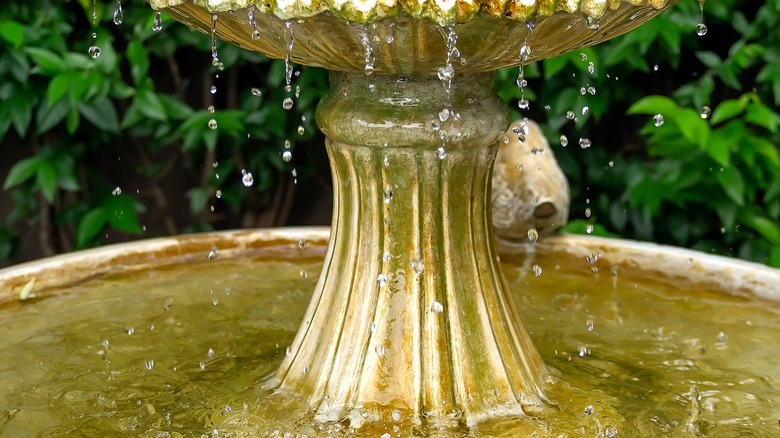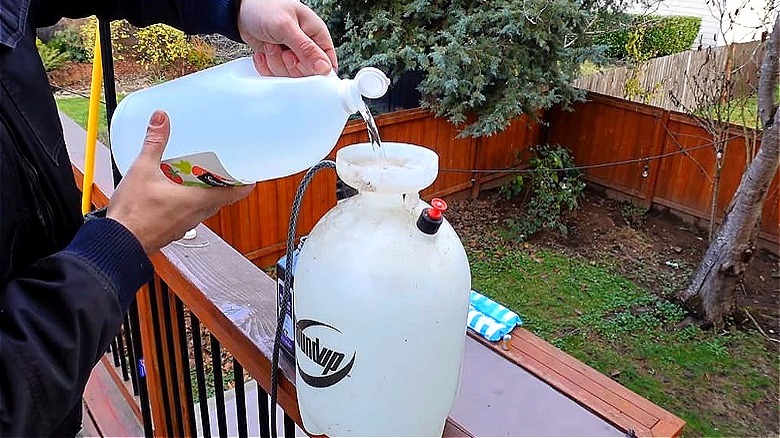The Household Staple That'll Make Algae A Thing Of The Past
As much as we appreciate the pop of color nature provides, algae are more than just an eyesore that spoils your outdoor aesthetics. Still, have you ever taken a slip on an algae-covered patch in the rain? It's certainly not the type of fall fashion we admire. Then, doesn't an easy, affordable, and effective remedy to this tacky problem sound enticing? You'll be surprised that your knight in shining armor could be a household staple sitting quietly in your kitchen cabinet: the unassuming white vinegar. It's not just a tangy, versatile addition to your recipes. This household cleaning staple also wields its potency in your homemade algae remover, thanks to the acetic acid that breaks down the invader's structure for easy removal.
So, how does algae form on concrete, stone, and wood surfaces? There's no free rent in nature, but the fusion of abundant moisture and limited sunlight makes these green invaders feel like they found the equivalent of a beachfront cabana for free. Battling algae takes multiple paths, including the high-pressure jet wash or a sodium hypochlorite solution. But either of these two might play the overzealous warriors, stripping paint from surfaces, leaving you with unsightly patches that rival the green pest it was supposed to obliterate.
Because of this, white vinegar steals the limelight here. Armed with nothing more than its inherent acidity, when used correctly, vinegar can help banish algae while sparing your precious concrete or wooden surface, wallet, (and furry companions) collateral damage.
How to remove algae with vinegar and water
The first order of business when cleaning algae with vinegar is a bit of reconnaissance of the affected area. For example, the acid in white vinegar is known for sour relations with oil or water-based paint on concrete. So, play the cautious card and test this potent mixture on a hidden corner of the target surface. Speaking of solutions, depending on the severity of your algae situation, you may need to adjust your approach. Fill a spray bottle with undiluted distilled white vinegar for stubborn infestations. Otherwise, mix equal parts vinegar and water to create a milder yet effective homemade algae remover for lighter cases. Remember, our vinegar ally is an indiscriminate slayer, so be cautious when spraying the liquid around grass or other cherished green sprouts.
The stage is now primed to eliminate that unsightly algae. Thoroughly drench the troublesome spot with vinegar, then take an hour off — think of it as a ceasefire, letting the solution penetrate and break down the algae. However, remember to treat finished surfaces with tender loving care. Vinegar, the overachiever it is, could erode polished cement if left unattended for extended periods. After the decisive hour, scrub the treated area with a stiff-bristle brush before concluding with a gentle rinse of water (again, no high-pressure washing). So, if you've been wondering how to remove algae from surfaces naturally, now you know the cost-effective winning formula could be nothing more than vinegar, water, and a dash of elbow grease.

